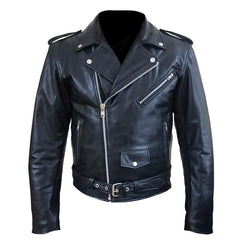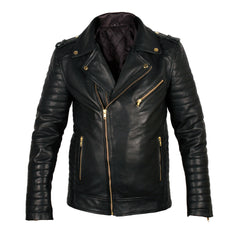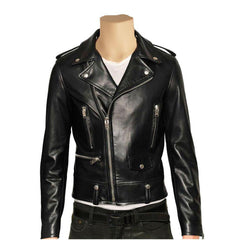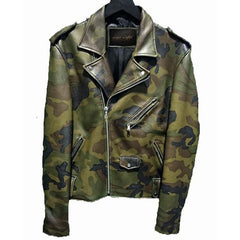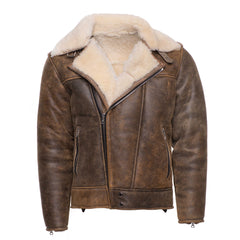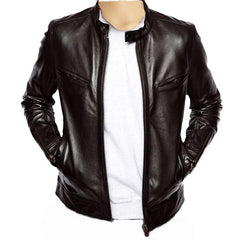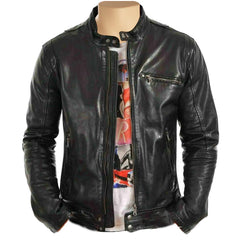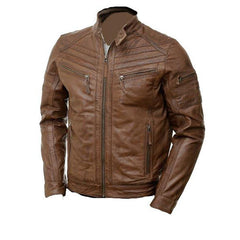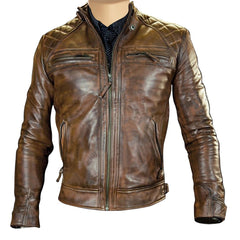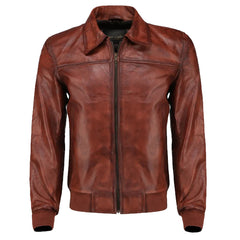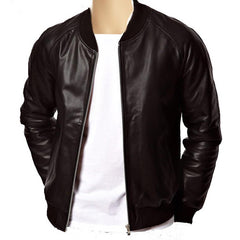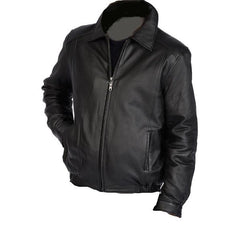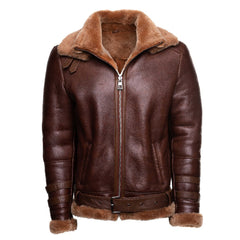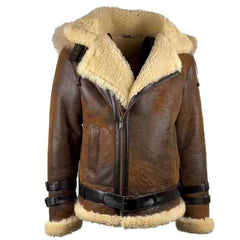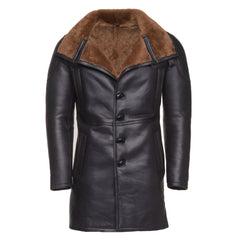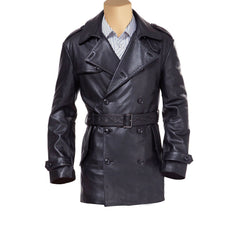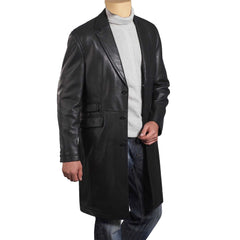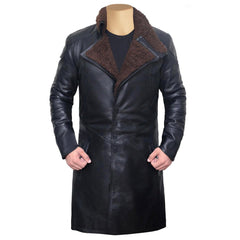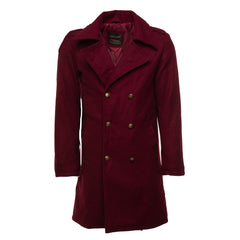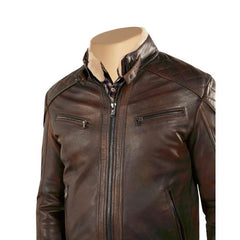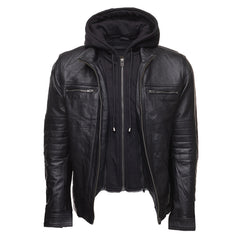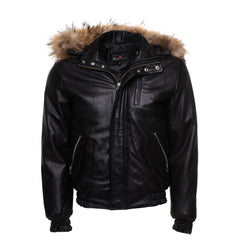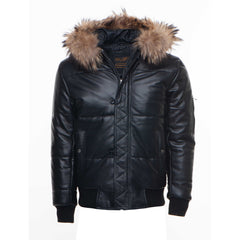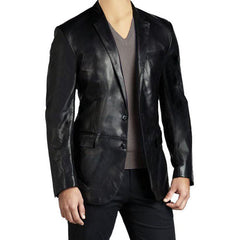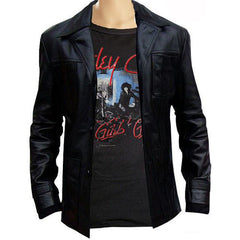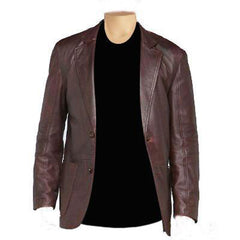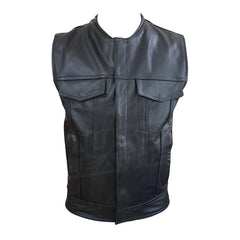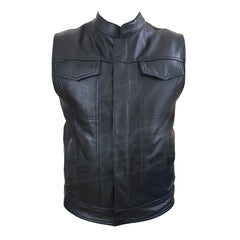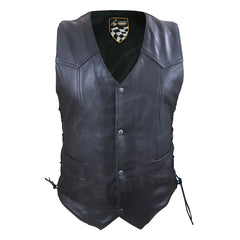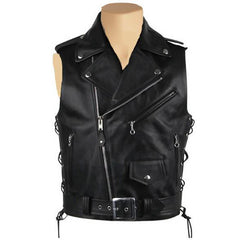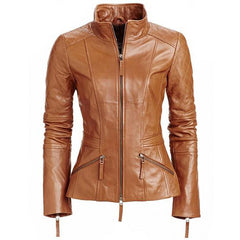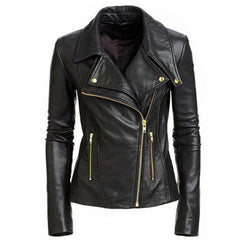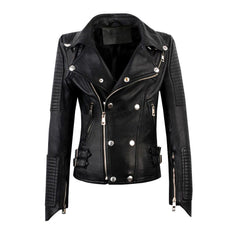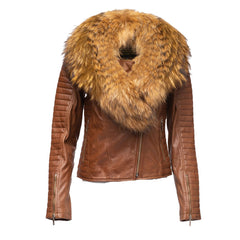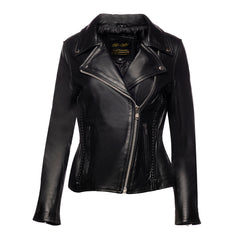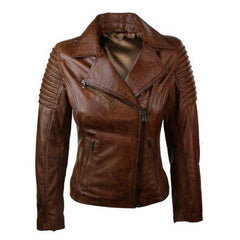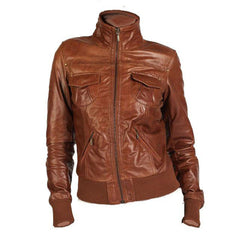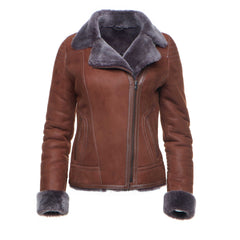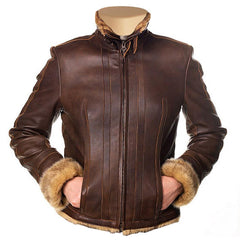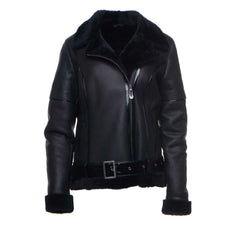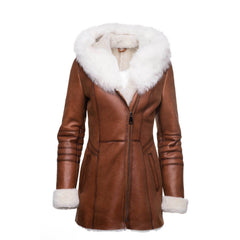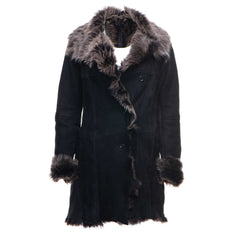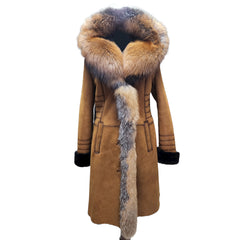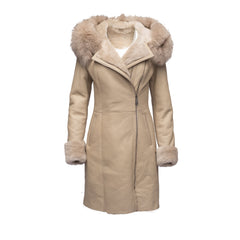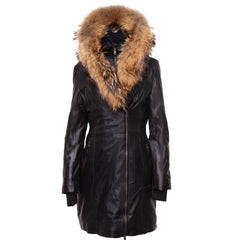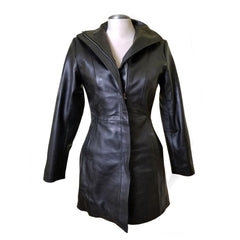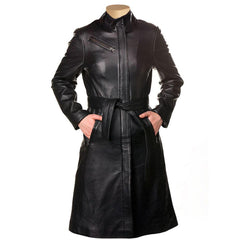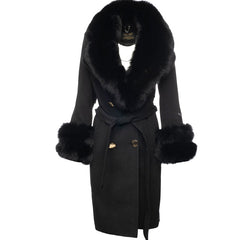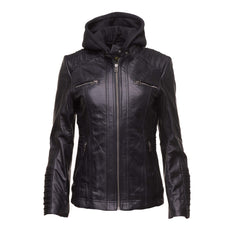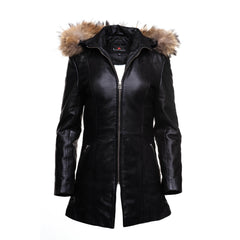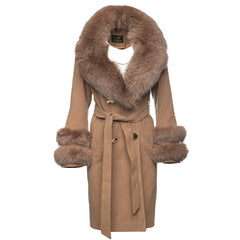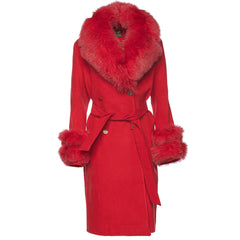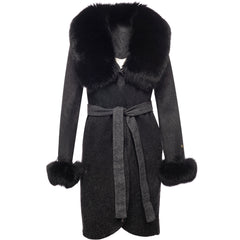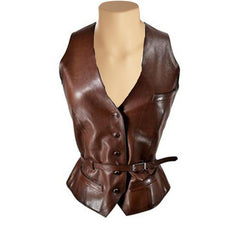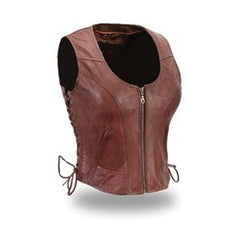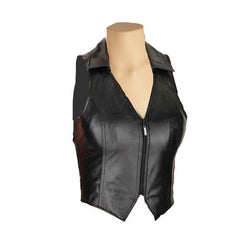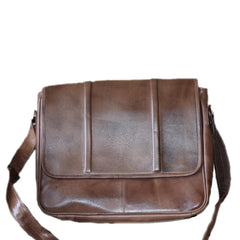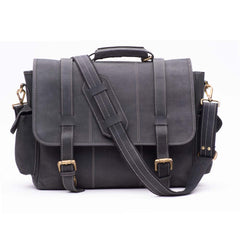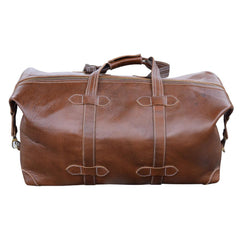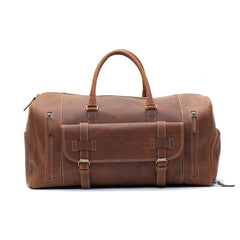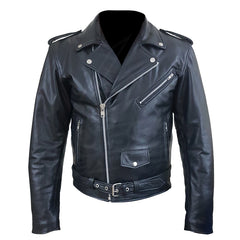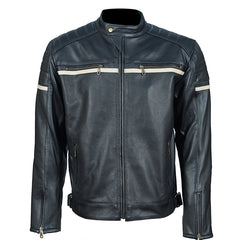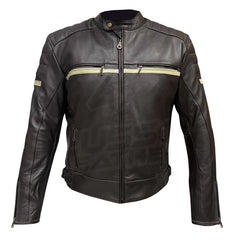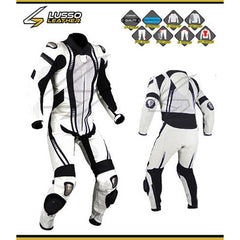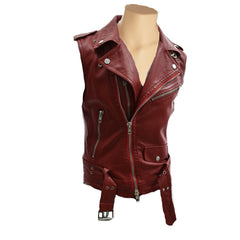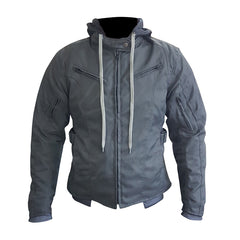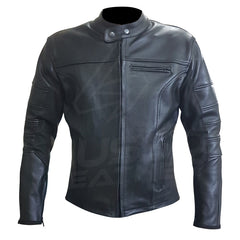How to Clean Faux Leather

Although faux leather doesn't need the same babying as real leather, but wait, think for a sec, think about your favorite jacket or that comfy couch. They take a beating, right? Cat naps, movie nights, and the occasional spill – all that stuff adds up. Here's the thing: if you give them a quick wipe down every now and then, you're basically giving them a shield. Dust and dirt can break down the material over time, making it crack and peel – not cute. Cleaning them regularly keeps them looking fresh and saves you from replacing them sooner than later. Plus, you know that ketchup stain from last week's burger? The sooner you tackle it, the easier it is to get rid of it completely. So next time you walk by your faux leather goodies, give them a little TLC – your future self will thank you!
How to Clean Faux Leather?
Faux leather doesn't need a ton of fuss to stay looking great and keeping it clean is easier than you think. Forget harsh chemicals, all you need is some gentle soap and warm water. To clean faux leather effectively, start by routinely dusting with a soft cloth or microfiber duster. For deeper cleaning, use a cloth dampened with mild soap and lukewarm water, ensuring not to oversaturate the material. Spot clean stains by blotting with a damp cloth and applying a mild detergent, then rinse and air dry.
For a more thorough clean, gently scrub the surface with a soft-bristled brush or cloth dipped in a mixture of warm water and mild soap. Remember to store faux leather items. in a cool, dry place away from direct sunlight, avoiding folding or creasing. To maintain shine and flexibility, use a faux leather conditioner and consider a repair kit for scratches or scuffs.
What Is Faux Leather?
Faux leather, also called synthetic leather, is basically an imitation leather made out of fancy fabrics and coatings. It's designed to look and feel like the real deal, but without using any animal products.
Unlike genuine leather sourced from animal hide, faux leather is manufactured using materials like polyurethane (PU), polyvinyl chloride (PVC), or silicone. Faux leather is used in various products such as clothing, upholstery, furniture, and accessories. It offers a more affordable alternative to real leather and is easier to maintain.
While faux leather lacks the natural characteristics and durability of genuine leather, it is versatile, stain-resistant, and available in a wide range of colors and styles, providing a cost-effective and animal-friendly option for those seeking the look and feel of leather without using animal products.
Step By Step Guide To Clean Faux Leather
Below are the steps you can follow to clean faux leather with ease:
Step 1: Inspect and Prepare
-
Before cleaning your faux leather item, it's important to inspect it thoroughly and prepare the surface for cleaning. Start by removing any excess dirt or debris with a soft-bristled brush or a dry cloth. Check the care label for any specific cleaning instructions provided by the manufacturer.
-
Next, test a small, inconspicuous area of your faux leather item with your chosen cleaning solution to ensure it does not cause any damage or discoloration. This step is crucial as different types of faux leather may react differently to certain cleaning products.
-
Once you've inspected the item and tested the cleaning solution, you're ready to move on to the actual cleaning process.
Step 2: Choose The Right Cleaning Solution [Mild soap and water, faux leather cleaner, White vinegar and water]
When cleaning faux leather, it's important to use the right cleaning solution to avoid damaging the material. Here are some options to consider:
Mild Soap and Water
A mild, bleach-free soap mixed with warm water is a gentle and effective solution for routine cleaning of faux leather as the soap's surfactant properties help remove dirt and suspend soil from the surface. Apply the solution sparingly with a soft cloth, gently rubbing in a circular motion. Afterwards, wipe the area with a clean, damp cloth to remove any soap residue and dry with a soft towel.
Faux Leather Cleaner
For a more specialized approach, consider using a commercial faux leather cleaner. These cleaners are specifically formulated to clean faux leather without harsh chemicals that can strip the finish or cause damage. Look for a cleaner designed for the type of faux leather you have, such as jackets or furniture.
White Vinegar and Water
A solution of white vinegar and water can also be used to clean faux leather. Mix one part vinegar with eight parts water and a small amount of mild soap. Apply the solution with a microfiber cloth, gently rubbing in a circular motion. Rinse with a clean, damp cloth and dry thoroughly.
Step 3: Clean the Faux Leather
-
Now that you have prepared the cleaning solution and tested it on a small area, you can proceed to clean the faux leather. Dip a clean, soft rag into the soapy water, making sure to squeeze out any excess water. You want the rag to be damp, not soaking wet, as excessive moisture can damage the faux leather.
-
Gently wipe the faux leather stains clean with the damp rag, working in a circular motion. Be sure to clean one small area at a time, especially if you're working on a large surface like a couch. This will help prevent the faux leather from getting too wet and potentially damaged.
-
After cleaning the stain, use a clean, dry, soft rag to wipe off the area and remove any soap residue. This step is crucial to prevent water spots from forming on the faux leather.
-
For tougher stains, you may need to gently scrub the area with a soft-bristle brush. However, be cautious not to apply too much pressure, as this can scratch or damage the material.
-
Remember to work slowly and patiently, as cleaning faux leather requires a gentle touch. Avoid using harsh chemicals, abrasive cleaners, or excessive water, as these can damage the material and cause it to crack, peel, or discolor.
Step 4: Remove Stains and Scuffs
Once you have cleaned the faux leather surface with a mild soap and water solution, it's time to tackle any remaining stains or scuffs. Here are some effective methods to remove stubborn marks:
Baking Soda Paste
Create a paste by mixing 1-2 tablespoons of baking soda with enough warm water and apply the same to the affected area using a soft cloth and gently rub in circular motions. Wipe away the excess paste with a clean, damp cloth and allow the area to dry.
Melamine Foam Sponge
Melamine foam sponges, such as Magic Erasers, can effectively remove scuffs and marks from faux leather. Dampen the sponge, wring out any excess water, and gently rub the affected area but be cautious not to scrub too hard, as this can damage the surface.
White Vinegar Solution
Mix one part white vinegar with eight parts water and a small amount of mild soap and apply this solution to the stain using a microfiber cloth, gently rubbing in a circular motion. Rinse with a clean, damp cloth and dry thoroughly.
Toothpaste
For stubborn scuffs, try using a small amount of white, non-gel toothpaste and apply the toothpaste to the affected area using a clean, soft-bristled toothbrush or cotton swab. Gently rub the toothpaste into the scuff, then wipe away with a damp cloth and dry the area.
Rubbing Alcohol
Rubbing alcohol can be effective in removing scuffs from patent leather and faux leather. Dampen a clean cloth with rubbing alcohol and gently rub the affected area. If you don't have rubbing alcohol, hand sanitizer can also work.
Step 5: Condition and Protect
After cleaning your faux leather, it's important to condition and protect it to keep it looking its best by which you can keep them looking great and extend their lifespan.
Conditioning
Like genuine leather, faux leather needs to be regularly conditioned to keep it soft and prevent cracks. Use a faux leather conditioner and apply it evenly with a soft cloth. Make sure to follow the instructions on the conditioner for the best results. Conditioning helps restore the material's flexibility and prevents it from becoming stiff and dry over time.
Protecting
To protect your faux leather from scratches, scuffs, and future damage, use a protective spray made specifically for faux leather. This will add a layer of protection on top of the material. Be careful not to oversaturate the material when applying the spray. Because of the added layer of protection, it's important to clean and condition your faux leather more regularly.
Avoiding Harsh Chemicals
Chemicals, such as bleach or alcohol, can cause damage to faux leather. Avoid using these types of cleaners on your faux leather items, and stick to gentle cleansers specifically made for faux leather. Using harsh chemicals can strip the finish and cause the material to crack, peel, or discolor over time.
Proper Storage
Store your faux leather items in a cool, dry place away from direct sunlight. Avoid folding or creasing them to prevent damage. Use dust covers or garment bags for protection. Exposure to direct sunlight or extreme temperatures can cause faux leather to crack and peel.
Things Not To Do When Cleaning Faux Leather
Faux leather is a trooper, but there are a few things to avoid when cleaning faux leather:
-
Don't use harsh chemicals or solvents: Harsh chemicals like bleach, acetone, or alcohol-based cleaners can cause faux leather to crack, peel, or discolor. Avoid using anything too abrasive.
-
Don't soak the material in water: Faux leather is not waterproof, and excessive moisture can damage the material. Never submerge faux leather in water.
-
Don't rub or scrub too hard: Rubbing or scrubbing faux leather aggressively with a rough cloth or sponge can cause scratches and cracks, so therefore, always use soft, gentle motions.
-
Don't expose to direct sunlight or heat: Prolonged exposure to sunlight and heat can cause faux leather to fade, dry out, and crack. Store items away from direct sunlight.
-
Don't use sharp objects: Sharp items like keys or pet claws can scratch or puncture faux leather. Be careful when handling faux leather items.
-
Don't use bleach: Bleach is extremely drying for faux leather and will compromise the material's structure, making it more prone to future damage. Never use bleach on faux leather.
-
Don't leave cleaning solutions on for too long: Whatever cleaning solution you use, be sure to wipe it off thoroughly after cleaning. Leaving solutions on the surface for extended periods can be harmful.
Experts believe that by avoiding these common mistakes and using gentle, faux leather-safe cleaning methods, you can keep your faux leather items looking great for years to come.
How To Maintain And Care For Faux Leather?
There are some comprehensive care and maintenance tips by which you can ensure that your faux leather items remain in good condition, looking great, and lasting for years to come. To maintain and care for faux leather effectively, follow these key strategies outlined in the provided sources:
-
Regular Cleaning: Clean faux leather products regularly to prevent dirt and grime buildup. Use a mild detergent or soap with warm water for cleaning.
-
Pre-Cleaning Preparations: Before cleaning, remove excess dirt with a soft-bristled brush, check care labels for specific instructions, and test cleaning solutions on a small area to avoid damage.
-
Spot Cleaning: For small stains, blot with a damp cloth, apply mild detergent, rub gently, rinse, and air dry.
-
Deep Cleaning: Mix warm water with mild detergent, gently scrub the surface, rinse, and air dry for more stubborn stains or overall cleaning.
-
Storing: Store faux leather items in a cool, dry place away from direct sunlight, avoiding folding or creasing to prevent damage.
-
Conditioning: Use a faux leather conditioner to restore shine and flexibility, applying it with a soft cloth in a circular motion.
-
Protecting: Use a protective spray to repel stains and water, ensuring to clean and condition faux leather more regularly due to the added protection.
-
Avoiding Harsh Chemicals: Refrain from using harsh chemicals, solvents, abrasive sponges, or leaving faux leather products in direct sunlight or near heat sources.
-
Proper Storage: Store faux leather items upright to prevent creasing, and avoid high heat and flame exposure.
Important Note:
In the realm of faux leather care, it's crucial to avoid using harsh chemicals that can damage or dye leather, especially when dealing with bonded leather or PU leather. Conditioning agents are essential to soften leather, whether it's vegan leather or PU leather, to maintain its flexibility and prevent cracking. Understanding the nuances between bonded leather and vegan leather helps in choosing the right cleaning methods to preserve the quality and appearance of these materials.
Similarly, when it comes to cleaning a leather purse, gentle care is essential to maintain its quality. Removing ink from leather requires a delicate approach, as harsh chemicals can damage the material, and in order to clean white leather, a mild soap solution and a soft cloth are usually sufficient to remove dirt and stains.
Conclusion
It's important to clean and care for faux leather regularly to keep it in the best condition and to prolong its lifespan. Consistent dusting together with tender cleaning using a mild soap water combo can remove surface filth and deter potential harm. For stubborn blemishes or smears, test cleanup techniques on a smaller, hidden area first, applying soft circular actions to prevent any scuffs on the material. Using a specific conditioner on faux leather can help regain suppleness and luster. A protective spray can contribute an additional shield against future stains and wear. To avoid cracking, discoloration or shedding ensure proper storage in a cool, dry spot away from direct sunlight. Following these all-encompassing cleaning instructions will help maintain your faux leather stuff looking new for many years.
FAQs - How to Clean Faux Leather?
What Cleaner Is Safe For Faux Leather?
Mild soap and warm water is all you need to clean faux leather safely. However, the Leather Milk Leather Cleaner - Straight Cleaner No. 2 is also considered as a safe and effective cleaner for faux leather, as it is made with all-natural, non-toxic ingredients and is specifically designed to gently remove stains and dirt without damaging the material.
How Do You Clean Faux Leather At Home?
To clean faux leather at home, dust and wipe the surface, use a mild soap solution or alternatives like baking soda paste or white vinegar, avoid harsh chemicals, and condition with a gentle conditioner or natural oils.
What Should You Not Use On Faux Leather?
Avoid using harsh chemicals, bleach, acetone, alcohol-based cleaners, abrasive sponges, or leaving faux leather in direct sunlight or near heat sources.
















